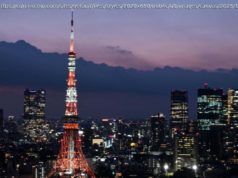%environment_news_service%
NEW YORK, New York, August 16,2017 (ENS) – The world’s first treaty to protect the environment and human health in nearly a decade, the Minamata Convention on Mercury, enters into force today, committing its 74 Parties, including the United States, to reducing the risks to human health and the environment from the harmful release of mercury and mercury compounds.
Mercury is a naturally-occurring heavy metal that accumulates in the body and is listed by the United Nations as one of the top 10 chemicals endangering health and the environment.
Exposure to mercury can harm the brain, heart, kidneys, lungs, and immune system, particularly in unborn children and babies.
The 74 governments that are parties to the Convention are now legally bound to take measures to protect human health and the environment by addressing mercury throughout its lifecycle.
This includes controls on mercury emissions to air and on releases to land and water, banning new mercury mines, phasing out existing ones, and regulating the use of mercury in artisanal and small-scale gold mining, manufacturing processes, and the production of everyday items such as cosmetics, light bulbs, batteries and tooth fillings.
The treaty also contains measures on the interim storage of mercury, on mercury waste and on measures to reduce the risks of contaminated sites. It addresses interim storage of mercury and its disposal once it becomes waste.
The convention also seeks to reduce emissions as side effects from other industrial processes, such as coal-fired power stations, waste incineration, cement clinker production.
“The Minamata Convention shows that our global work to protect our planet and its people can continue to bring nations together. We did it for the Ozone layer and now we’ re doing it for mercury, just as we need to do it for climate change – a cause that the Minamata Convention will also serve. Together, we can clean up our act, ” said Erik Solheim, head of UN Environment.
Entry into force celebrations are taking place in various parts of the world, including today in Beijing, China.
Signed by 128 countries, the Convention takes its name from the most severe mercury poisoning disaster in history, which came to light in Minamata, Japan in May 1956, after sustained dumping of industrial wastewaters into Minamata Bay that began in the 1930s.
Residents of local villages who ate fish and shellfish from the bay suffered convulsions, psychosis, loss of consciousness and coma. Thousands of people were certified as having directly suffered from mercury poisoning, now known as Minamata disease.
Anja Leetz, executive director of Healthcare Without Harm Europe, commented, “Today is also a sobering moment to recognize how slow our collective response to industrial pollution is. The Minamata disease was first caused by the release of methylmercury in industrial wastewater from a chemical company – first reported in 1956.”
“Locals around the Minamata Bay, Japan, were eating fish that had bioaccummulated mercury from waste-water released into the environment.” said Leetz. “Consuming high levels of mercury in this way poisoned them and their children, and the devastating neurological effects became known as Minamata disease. The pollution and damage to health continued for many years until the company responsible and government finally took action.”
There is no safe level of exposure to mercury nor are there cures for mercury poisoning, which at high levels causes irreversible neurological and health damage. Unborn children and babies are the most vulnerable, along with populations who eat fish contaminated with mercury, those who use mercury at work, and people who live near a source of mercury pollution or in colder climates, where the dangerous heavy metal tends to accumulate.
“We must protect humans and the environment from the neurotoxin mercury by reducing exposure wherever possible. HCWH Europe wants to continue working with European countries, the health sector, and the public to speed up the implementation of the Minamata convention through education and prevention of mercury exposure. This includes safe collection and storage of mercury based devices, including from people’s homes, and a reduction of mercury from other sources such as coal-fired plants, ” said Leetz.
A 2017 study comparing mercury levels among women of child-bearing age in the Asia and Pacific regions revealed high traces of mercury in 96 percent of the women tested from Pacific communities who have high fish diets.
Naoko Ishii, CEO and chairperson of the Global Environment Facility, GEF, a funding organization, said, “I am delighted to join others in the international community and celebrate the entry into force of the Minamata Convention on Mercury. It is an honor for the Global Environment Facility to be tasked with providing grants for projects and programs to reduce and eliminate the use of mercury.”
“We are ready to continue to help countries conducting inventories, implementation plans, and investments in technology to make mercury history, ” said Ishii.
Up to 8,900 tonnes of mercury are emitted each year. It can be released naturally through the weathering of mercury-containing rocks, forest fires and volcanic eruptions, but emissions also come from human processes, such as burning coal and artisanal and small-scale gold mining. Mining exposes up to 15 million workers in 70 countries to mercury poisoning, including child laborers.
Other human activities that may be sources of mercury pollution include the production of chlorine and some plastics, waste incineration and use of mercury in laboratories, pharmaceuticals, preservatives, paints and jewelry.
Since the element is indestructible, the Convention also stipulates conditions for interim storage and disposal of mercury waste.
Like other heavy metals, mercury persists in the environment and builds up in human and animal tissue, particularly in fish. Because it is easily vaporized, mercury can be transported through the air over long distances far removed from its original emission source, polluting air, water and soil.
Regardless of U. S. ratification of the Minamata Convention in 2013, in response to the coal-fired power industry’s concerns, the Trump administration’s Environmental Protection Agency, EPA, is reconsidering a Obama-era EPA rule that set the first national limits to protect public health from mercury emissions.
Environmental and health organizations and concerned citizens from throughout the nation came to Washington, DC, July 31 to speak at an EPA public hearing on its proposal to indefinitely delay the requirements of the 2015 Steam Electric Effluent Limitation Guidelines.
“The Trump administration is resorting to increasingly absurd and illegal tactics to elevate the most powerful polluters above the law, ” said Waterkeeper Alliance staff attorney Pete Harrison.






